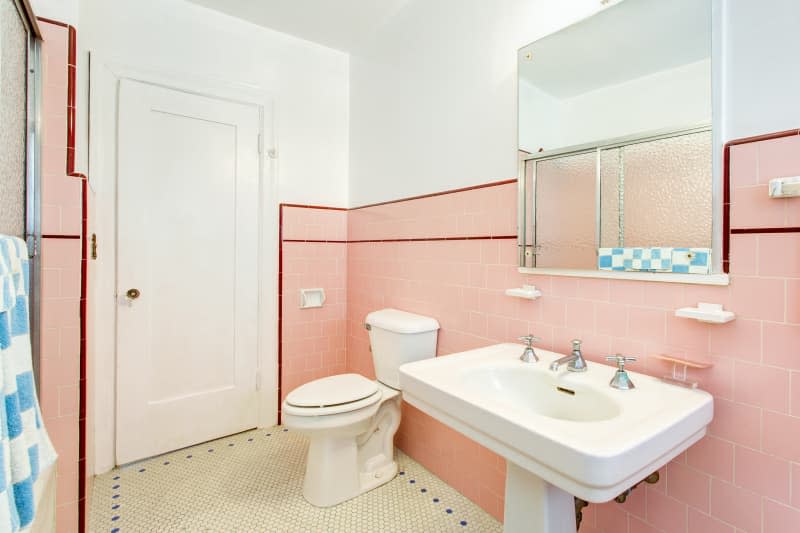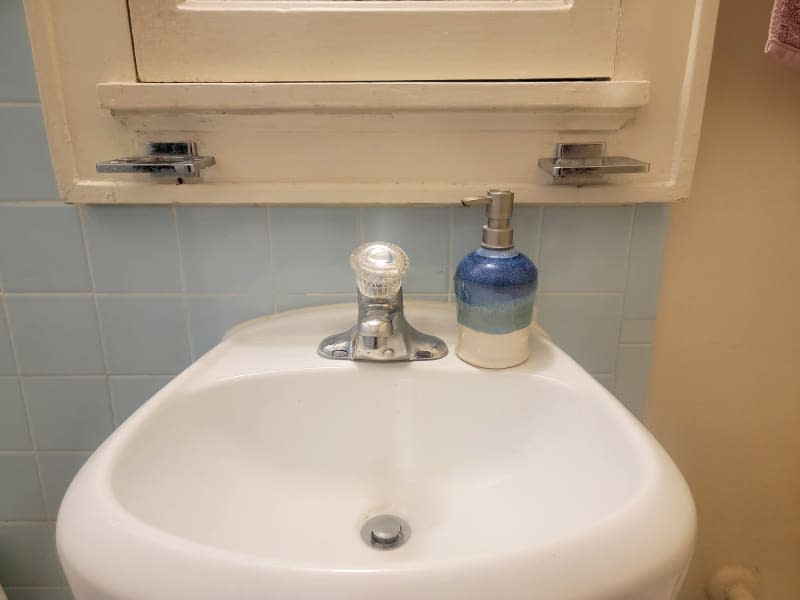I’m a Style Editor, and This Old-School Home Feature Gives Me the Ick

When you rent, there are plenty of rental features you can change — and others you have to live with. Many rentals don’t allow you to change the color of the trim, touch the flooring, or make any major changes. My personal pet peeve, however, is one that you might not have to deal with, unless you live in a fairly old-school building: a built-in soap dish and toothbrush holder.
I love nearly everything about my vintage apartment — the crown molding, the oak wood trim, the ridiculous amount of space — but I absolutely detest the metal soap dish and toothbrush holder by my sink. For one, I use an electric toothbrush, which means none of the holes will hold my toothbrush anyway.
For another, I prefer to keep my toothbrush in my medicine cabinet, out of range of any stray toilet plumes (even though I always flush with the lid closed, I like to be extra sure). As for soap, I bought a beautiful ceramic dispenser that I keep filled at all times, which, at least for me, is much neater than keeping a bar of soap in a soap dish.
More than anything else, though, both built-ins stand out painfully in my bathroom. My bathroom is blue-tiled with cream trim and walls — and the silver metal stands out prominently, and definitely not in a good way. Plus, without anything on them, they just seem to be an aesthetic eyesore at best.

These built-ins, of course, are meant to be practical over anything else — my pedestal sink doesn’t allow room for much on it, and my ceramic soap dispenser is usually jockeying for space with my face wash. According to design historian Maile Pingel, “Built-in soap dishes, along with built-in toothbrush and cupholders, came into use during the early 20th century, becoming more common in the 1920s.” Before this era, they were more common as freestanding accessories, with pottery and porcelain factories manufacturing them by the thousands.
Wall-mounted holders were made of metal, white-enameled cast iron, or white ceramic, though showers often had a simple inset shelf, and tubs had a caddy. “When companies like Kohler started producing colorful suites of matching sinks, tubs, and toilets, they also created matching tiles, with built-in soap dishes and toothbrush holders for a complete ‘look,’’’ Pingel says.
“Built-in holders, be they ceramic or chrome, which also became popular, remained a relatively standard bathroom feature from the 1940s on,” Pingel continues. This explains the inclusion of the built-ins in my apartment, which was built in 1949.
Unfortunately, a built-in soap dish isn’t something you can rip out if you don’t like it — at least not in a rental. I put off doing anything about it for nearly two years, and now I’m moving out next month, so there’s not much point in trying to change it now. Plus, whoever lives here next might treasure seeing an original feature in a bathroom, even if I don’t.
It turns out there are things I could’ve done to help cover up the eyesores. Some people used contact paper either on the built-ins or around them to tie them better into their decor. One creative put flowers in the toothbrush holder in their guest bathroom, while another suggested putting accessories like a rubber ducky on the soap dish.
You can also try to build a shelf over both to create a little more space. Since bathrooms with built-ins, especially in older buildings, don’t tend to have a lot of sink or counter space, you might want to look into this under-the-sink IKEA storage hack as well. Either way, I’m looking forward to my new bathroom, where I can use soap and toothbrush holders of my choosing, with no limitations.

